A guide to neuromarketing (+ 5 examples to boost sales)


Neuromarketing, sometimes called consumer neuroscience, is a comparatively new addition to the marketer’s toolbox, especially when you consider the deep roots of buyer psychology.
Neuromarketing is a way to solve the complexities so succinctly summarized by David Ogilvy: “People don’t think what they feel, don’t say what they think, and don’t do what they say.”
It examines the subconscious reactions of your audiences using scientific measurements. You can see how the body and brain respond to stimuli—before they pass through the sieves of feelings, thoughts, and words.
Let’s get into what neuromarketing actually is, why it’s good business, and how different techniques boost sales.
What is neuromarketing and why should you care?

Neuromarketing is all about understanding what makes your customers tick on a deep, brain-based level. Instead of relying on guesswork or what people say they’ll do, it looks at what’s going on in their minds when they see your brand, ads, or products.
Using tools such as brain scans (fMRIs), electroencephalography (EEG), and eye-tracking, neuromarketing digs into the emotional and subconscious drivers behind buying decisions.
It’s where neuroscience meets marketing to help you uncover what truly grabs attention, builds trust, and converts.
The big win? You get insights traditional surveys and focus groups just can’t reach because it taps into subconscious responses, not self-reported opinions.
Key areas of neuromarketing
Neuromarketing is way more than another trending buzzword—it’s a tool that transforms the way you connect with your audience. By tapping into how the brain responds to different types of marketing, you can uncover what really drives attention, emotion, and action.
These are the core areas of neuromarketing you can use to your advantage:
- Sensory marketing
Examines how stimuli such as colors, sounds, and scents influence consumer preferences.
- Emotional engagement
Measures emotional responses to branding and advertising to optimize marketing strategies.
- Attention and memory
Studies how consumers perceive and remember brand messages.
- Decision-making processes
Analyzes the cognitive and emotional factors that drive purchasing behavior.
- Behavioral triggers
Identifies psychological cues that lead to increased engagement and conversions.
It’s likely these are all familiar buyer psychology concepts you’re incorporating into your marketing strategies, which is great because neuromarketing techniques become an additional layer of understanding and scientific evidence to support successful decision-making.
Why is neuromarketing important to your business?
Wouldn’t you like to know what your customers are really thinking? Get their real opinion of your next feature, product, or service?
That’s what neuromarketing techniques bring to the party. There are no worries about bias or politeness getting in the way of people telling you what they think. Neuromarketing bypasses the need for conscious thoughts being turned into words.
And when you understand the neurological and psychological factors that drive decision-making, you can create laser-focused campaigns that pack a full punch.
Key business benefits of neuromarketing
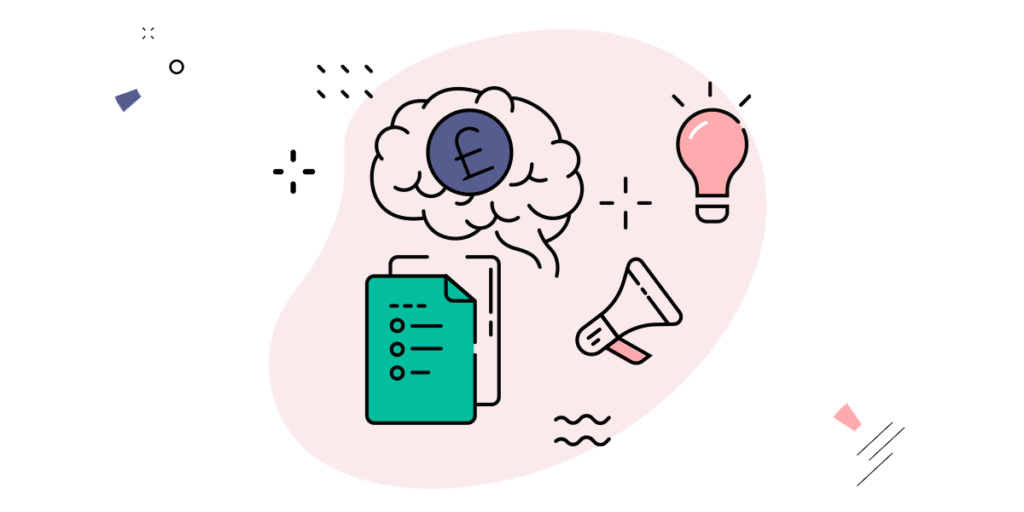
- Enhanced consumer engagement: Want to grab your audience’s attention and keep it? By tapping into emotional and cognitive responses, you’ll create content and messaging that sticks.
- Improved ad effectiveness: Discover which parts of your ads your audience loves and which parts they skip. With neuromarketing insights, you can tweak visuals, headlines, and calls to action for better performance.
- Increased brand loyalty: When you understand what your audience really feels about your brand, you can build emotional connections that keep them coming back for more.
- Better product and packaging design: Find out how people respond to your product’s look and feel. Small design tweaks, underpinned by the data, can make a big difference to how your product is perceived.
- Higher conversion rates: See what drives people to take action. Neuromarketing helps you fine-tune your marketing and sales strategies to turn more browsers into buyers.
- Reduced marketing waste: Say goodbye to guesswork. Neuromarketing shows you what works and what doesn’t so you can focus your time and budget on what really moves the needle.
- Competitive advantage: Most businesses are still flying blind. With neuromarketing on your side, you’ll have insider knowledge of your audience—giving you a serious edge in the market.
Understanding these key areas of neuromarketing helps you make more informed decisions about how you communicate, design, and engage. It may feel like an overcomplication of existing processes, but it’s really just another string to your bow.
Neuromarketing techniques explained
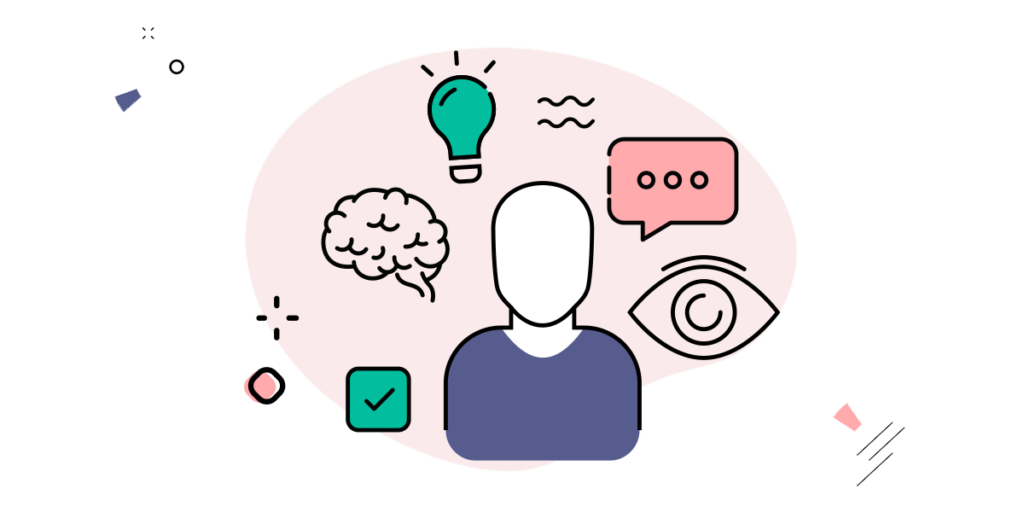
Under the umbrella of ‘neuromarketing’, there are effective scientific methods and technologies for analyzing consumer behavior and optimizing marketing strategies:
Functional magnetic resonance imaging (fMRI)
Measures changes in brain activity by detecting blood flow, showing how consumers respond to marketing stimuli. This is the best option for measuring emotional responses, but it must be done in a lab and is both expensive for you and invasive for your participants.
Electroencephalography (EEG)
Tracks brainwaves in real time to show how people feel when they interact with your marketing—perfect for testing ads, designs, and messages.
Eye-tracking
Uses specialized cameras to follow where people look (and for how long) so you can see what’s catching their eye and what’s getting ignored. Great for improving layouts, packaging, and websites. This is a less invasive, cheaper option but you can’t use this technique to measure emotional response.
Facial coding
Interprets micro-expressions and facial movements to pick up on real emotional reactions—even the ones people don’t realize they’re having.
Galvanic skin response (GSR)
Measures changes in skin conductivity caused by emotional arousal, helping you understand how engaging (or not!) your content really is.
Implicit association test (IAT)
Reveals subconscious (hidden) preferences and biases by measuring how quickly people associate words or images with your brand—great for uncovering what’s going on under the surface.
Biometric analysis
Tracks physical responses such as heart rate and breathing to see how someone’s body reacts to your content—giving you another layer of insight into engagement.
Neurofeedback and AI-powered analytics
Combines large sets of neurological and behavioral data with machine learning to spot patterns and predict what’s likely to work so your marketing keeps getting smarter over time.
5 examples: How you can use neuroscience in your marketing
Not all techniques are applicable across all businesses—it’s about selecting the best tool for the job. Only a few businesses have pockets as deep as Apple and Coca-Cola, but we can all learn from shared lessons.
Now we’ll look at examples of practical applications of neuromarketing techniques and how ScoreApp helps you use them to your business advantage.
Example 1: Why people abandon surveys and how neuromarketing solves it

One of the biggest challenges in survey design is keeping people engaged from start to finish. Many surveys lose participants because they’re too long, visually dull, or fail to offer immediate value (Krosnick, 1991).
At ScoreApp, we’re changing that. By using neuromarketing techniques such as tracking fixation duration, we help optimize question placement and readability—making it easier for users to stay focused. And with personalized feedback delivered instantly at the end, users get real, relevant insights that make the experience feel worthwhile. The result? Higher completion rates and better-quality data.
Fixation duration: Optimizing survey structure to hold attention
Fixation duration is the time someone spends looking at a specific element before moving on (Rayner, 2009). Longer fixation means it’s catching attention. Shorter, and it’s either being skipped or is too hard to process. That’s where smart design makes all the difference.
Eye-tracking research shows that:
- Simple, bold questions hold attention longer than cluttered, text-heavy ones.
- Placing key questions where the eye naturally lands—in the center or along an F-pattern—boosts engagement.
- Progress bars reduce dropout rates by giving users a clear sense of completion time (Bergstrom and Schall, 2014).
At ScoreApp, we use these insights to craft surveys that are clean, clear, and easy to follow. From visual hierarchy to layout, every element is built to keep users focused and get more completions.
Personalized feedback: Increasing motivation with instant insights
Behavioral psychology shows that people are far more engaged when they get an immediate reward, rather than waiting for delayed gratification.
Personalized feedback taps into this by:
- Giving users instant, relevant results that show the value of finishing the quiz.
- Using dynamic text and visuals to make the experience feel personal and unique.
- Creating an emotional connection that makes users feel seen and understood—boosting trust and engagement.
ScoreApp leverages this principle by providing instant, customized quiz results so users feel their participation is worthwhile.
How ScoreApp uses these neuromarketing principles to boost your survey engagement
Most surveys fail because they’re too long, lack structure, and don’t offer immediate value. ScoreApp changes that by applying smart, science-backed design to keep users engaged from start to finish.
Here’s how we do it:
- Fixation duration research informs our visual layout, structuring surveys in a way that holds attention and improves readability.
- Strategic question placement follows natural eye movement patterns, making surveys easier to navigate and reducing dropout rates.
- Clear progress indicators give users a sense of momentum and help lower uncertainty, keeping them motivated to complete the survey.
- Instant, personalized feedback rewards users the moment they finish, increasing satisfaction and boosting overall completion rates.
- Customizable response options make users feel understood and valued, building stronger relationships and delivering more accurate data.
By weaving these neuromarketing principles into every quiz, ScoreApp helps businesses create experiences that feel effortless, rewarding, and built to convert. And helps you make strategic decisions built on data-driven insights.
Example 2: Why visual saliency and eye-tracking insights matter—especially to your video mini-courses

The human brain processes visuals far faster than text, which makes design a key driver of engagement—especially when it comes to video content.
Eye-tracking research shows we’re naturally drawn to faces, movement, and high-contrast visuals. When used strategically, these elements guide attention, highlight key messages, and make information easier to absorb.
By structuring videos around visual saliency, you reduce cognitive overload and boost viewer retention. ScoreApp’s tools make it easy to apply these principles, helping you create video mini-courses that aren’t just watched, but remembered.
How eye-tracking reveals what grabs attention
Eye-tracking studies reveal that people don’t read content word for word. They scan it. Most users follow predictable patterns, such as the F-pattern or the Z-pattern, glancing across the screen before locking onto key elements.
That means placing your most important visuals, headlines, and calls to action exactly where the eye is most likely to land. No confusing clutter. Just clear, high-impact design that drives action.
The result? Quizzes, landing pages, and video content that feel intuitive and effortless—because they’re built around how the brain works.
Visual saliency: Designing for instant impact
Our brains are wired to notice what stands out, especially when it comes to color, movement, and faces. Eye-tracking studies show that high-contrast visuals, dynamic motion, and human expressions instantly draw the eye and hold attention.
That’s why ScoreApp builds visual saliency into your design options. Use bold, contrasting colors for key messages. Add subtle animations to keep things moving and maintain interest. And include human faces to create an emotional connection that makes your content feel more relatable and trustworthy.
We don’t just want you to look good, but provoke action.
Guiding attention with motion and directional cues
Eye-tracking research shows that motion isn’t just eye-catching, it’s directional. Our gaze naturally follows movement, and even subtle visual cues, like arrows or people looking toward a specific element, can guide where we focus next.
Animate key information to make it pop at just the right moment, and use gaze cues or directional graphics to lead users straight to your calls to action. It’s a simple but powerful way to keep your audience moving through your content with ease.
Reducing cognitive overload for higher retention
The brain loves simplicity. When there’s too much going on visually, it quickly becomes overwhelming, leading to confusion, frustration, and drop-off. Neuromarketing studies show that cognitive overload makes it harder for people to process and remember information.
That’s why ScoreApp keeps design clean and purposeful. We remove distractions, focus on what matters, and use clear visual hierarchies to guide the eye. The result? Viewers instantly know where to look, what to do, and what to remember.
How ScoreApp helps you apply eye-tracking insights
These proven neuromarketing principles are part of our design process for content that’s visually compelling and easy to follow.
Here’s how ScoreApp makes it simple:
- Optimized templates position your key content where the eyes naturally land.
- Personalization tools let you tailor visual elements to connect with your viewers.
- Clean, high-contrast design options make your message clear and easy to remember.
- Integrated analytics track how your viewers engage so you can continuously optimize your courses.
Example 3: Optimize your webinar funnel with 4 neuromarketing tips

Want to make your webinars more engaging, memorable, and persuasive? Neuromarketing principles help you do exactly that, by aligning your content with how the brain naturally processes information.
Here are four science-backed strategies to keep your webinar funnel full to the brim.
1. Personalize content through pre-webinar assessments (self-relevance effect and priming)
Neuromarketing technique: The self-relevance effect states that people engage more with information that feels personally relevant. Priming shapes expectations before the webinar, making participants more receptive.
Application: Use interactive quizzes during the registration process to gather insights into attendees’ interests and tailor your webinar content accordingly.
2. Enhance visual appeal using eye-tracking insights (visual hierarchy and attention bias)
Neuromarketing technique: Eye-tracking studies reveal how people naturally scan visuals, and attention bias ensures they focus on emotionally or visually striking elements.
Application: Make sure everything to do with designing your webinar uses the principles of visual hierarchy, from your landing page through to your follow-up social posts. That means placing key information where people naturally look (center or top left) and using colors, images of faces, and directional cues to focus attention where you want it.
3. Use gamification to boost engagement (dopamine and reward-based learning)
Neuromarketing technique: Dopamine release is triggered by rewards, propelling learning and engagement to the next step and making it more enjoyable. Reward-based learning reinforces participation and encourages repeated interactions.
Application: Use real-time polls, quizzes, and interactive challenges during your webinar to create a sense of continuous achievement.
4. Implement automated and personalized follow-ups (reciprocity principle and memory encoding)
Neuromarketing technique: The reciprocity principle states that people are more likely to take action when they feel they’ve received something valuable first. Memory encoding research suggests that personalized follow-ups reinforce key takeaways and increase conversion rates.
Application: After your webinar, send the participants emails with key highlights, exclusive content, or tailored offers based on their quiz responses. Segment your audience, and set this up as an automated sequence with ScoreApp.
By integrating these neuromarketing strategies, you can design webinar funnels that capture attention, drive engagement, and convert attendees into loyal customers.
Example 4: Improving lead generation results and boosting sales

1. Eye-tracking
This technique monitors where and how long a person focuses their gaze, providing insights into attention and interest.
Example: Netflix
Netflix conducted a large-scale eye-tracking study with over 300 participants to assess reactions to different thumbnails. The findings revealed that faces, emotions, colors, and text significantly influenced viewer engagement. By optimizing these elements, Netflix increased clickthrough rates by up to 30%.
While most businesses are unlikely to use this level of tech, heatmaps (like Hotjar) are a more accessible alternative. You can track website visitors and email marketing click metrics to see your users’ levels of interaction.
2. Behavioral analysis
ScoreApp’s interactive quizzes assess potential clients’ commitment, consistency, and coachability. This behavioral analysis ensures only high-quality leads progress through the funnel, reducing drop-off rates.
Example: ScoreApp client RNT Fitness
RNT Fitness implemented a body transformation quiz as the initial step in their client journey. By evaluating key behavioral traits, they attracted over 5,800 participants, achieving an average conversion rate of 13.6%.
3. Personalized feedback to leverage emotional engagement
Studies have shown that personalized experiences activate the brain regions associated with reward and motivation, which increases the likelihood of conversion.
Example: ScoreApp quiz design
ScoreApp delivers personalized quiz feedback that sparks emotional engagement, builds trust, and turns curious visitors into serious leads.
4. Data-driven personalization informed by neurometrics
By analyzing every quiz response, ScoreApp helps you segment your leads and send follow-up messages that feel genuinely personal. When you match user preferences and decision-making behaviors, you’ll ensure your content hits the mark.
Example: ScoreApp client Neurify
Neurify used ScoreApp to track changes in students’ mental health behaviors before and after their training program. The data gave them clear, measurable proof of impact that helped them secure more contracts and unlock new growth opportunities.
Example 5: Neuromarketing tips to personalize your online quizzes
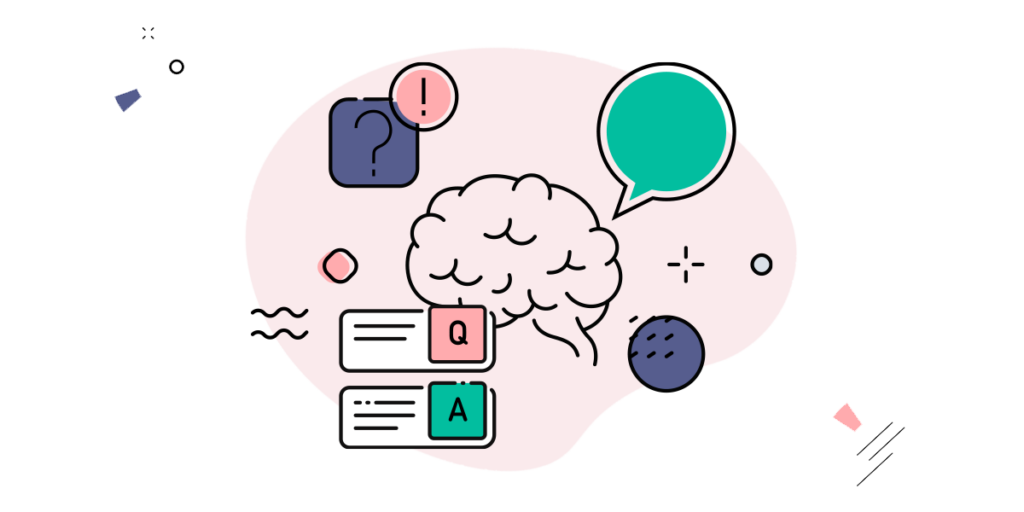
Here’s a quick roundup of the brain science that we’ve baked into your quiz strategy.
Eye-scanning patterns and quiz layout optimization
- Brain science: Users typically follow predictable eye-scanning patterns such as the F-pattern and the Z-pattern.
- ScoreApp recipe: ScoreApp makes it easy to position key quiz elements—questions, buttons, and CTAs—where users naturally focus first. By aligning with proven attention patterns, your most important content will get seen and acted on.
Visual saliency and attention capture
- Brain science: Contrasting colors, motion, and size differences capture attention and drive focus toward important elements such as buttons and CTAs.
- ScoreApp recipe: With ScoreApp, you can customize button colors and placement to stand out. Eye-catching design draws attention to key actions and boosts clickthrough rates.
Cognitive load and quiz simplicity
- Brain science: The brain can only handle so much information at once, so reducing cognitive load improves user interaction and completion rates.
- ScoreApp recipe: ScoreApp helps you build clean, intuitive quizzes so your users stay focused and move through each step without feeling confused or overwhelmed.
Peripheral vision and subconscious decision-making
- Brain science: Users absorb peripheral visual cues, such as directionally focused images or small animations, which can influence decisions without direct focus.
- ScoreApp recipe: With ScoreApp, you can use subtle peripheral cues—like arrows or images of people looking toward your CTAs—to gently guide users’ attention and encourage them to take the next step in your quiz journey.
Fixation duration and personalized feedback
- Brain science: Personalized content leads to longer fixations (users linger longer), indicating a higher level of engagement.
- ScoreApp recipe: ScoreApp’s Smart Scorecards deliver personalized feedback, such as tailored results and recommendations, that speaks to users’ interests and motivates them to keep moving forward.
Gaze cueing and CTA optimization
- Brain science: Humans instinctively follow the gaze of others. Using gaze-following imagery near CTAs can guide attention and increase clickthrough rates.
- ScoreApp recipe: ScoreApp lets you incorporate images and design elements with gaze cues, such as people looking toward your CTA, to gently nudge users to clicking and taking action.
Get built-in neuromarketing with a ScoreApp quiz
We’ve added the neuromarketing techniques so you don’t even have to think about it! Your quizzes will feel intuitive, persuasive, and enjoyable to your audience, leading to better engagement, more high-quality leads, and higher conversion rates. And don’t forget about all those data insights for strategic thinking!
Ethical considerations of using neuromarketing techniques
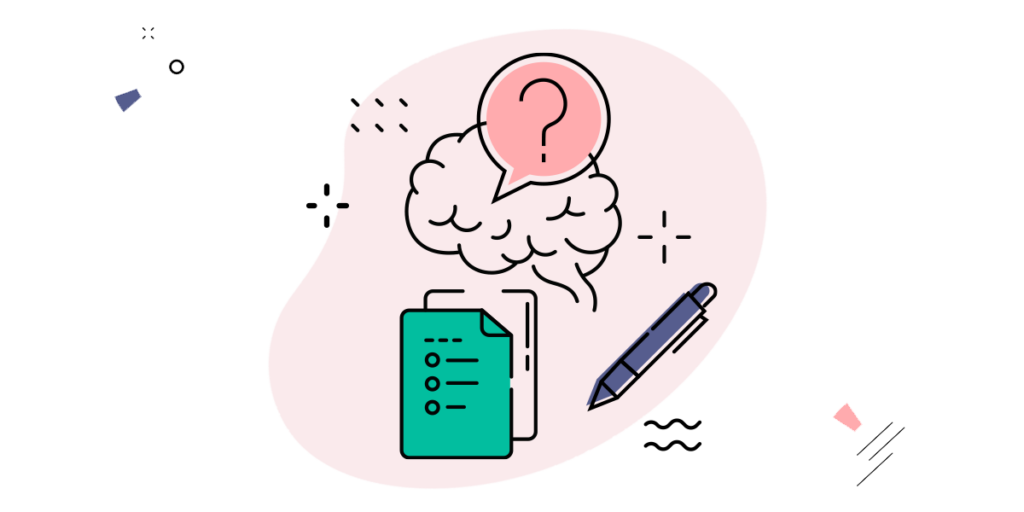
Neuromarketing offers powerful insights into how people think and make decisions. But with that power comes responsibility. It’s important to apply these techniques in a way that respects users’ rights and builds long-term trust.
Here are the key ethical factors to keep in mind:
- Consumer privacy: Some neuromarketing tools collect sensitive data. Always get clear, informed consent before gathering or using personal, neurological, or biometric information.
- Manipulation or motivation? Persuasion is part of marketing, but crossing the line into manipulation damages trust. Ethical neuromarketing should guide and empower users, not exploit their subconscious.
- Transparency and honesty: Be open about how and why you collect and use neuromarketing data. People appreciate honesty, especially when it comes to their personal information.
- Data security: If you’re handling user data, it’s your job to keep it safe. Use secure systems and follow best practices to prevent misuse.
- Bias and fairness: Include diverse groups in your research and testing. This helps avoid bias that reinforces stereotypes or excludes certain groups.
- Regulatory compliance: Stay up to date with laws and industry standards that govern data use and consumer protection. It’s good for your business and your customers.
By approaching neuromarketing with care and integrity, you can unlock powerful results and build the kind of trust that keeps customers coming back.
Neuromarketing made simple with ScoreApp
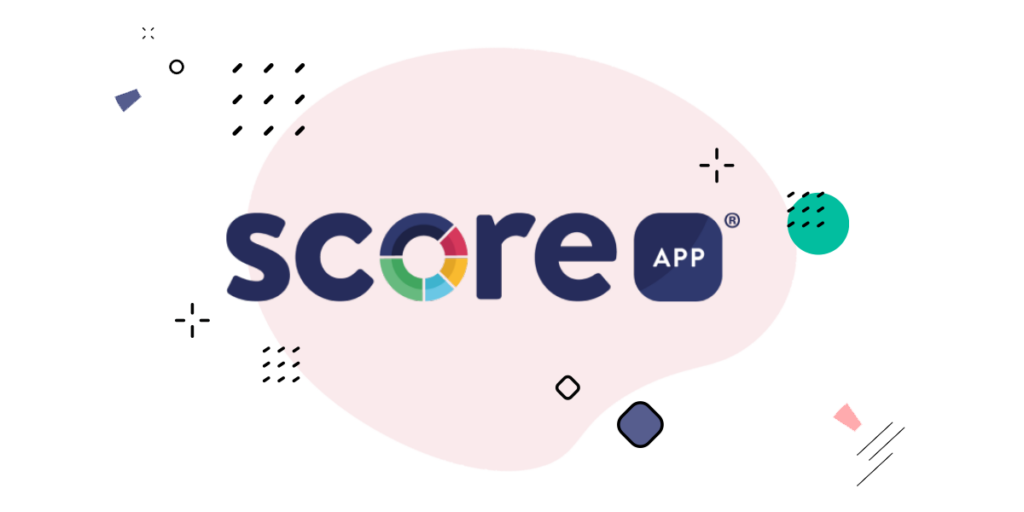
The future of neuromarketing is already taking shape with AI-powered behavioral analysis and advanced biometrics tools, making it easier than ever to understand how people think, feel, and decide.
But here’s the good news: you don’t need a neuroscience degree to get started.
Neuromarketing is really about one thing—connection.
It’s about understanding your audience just a little better so you can deliver experiences that feel more relevant, more human, and more effective.
With ScoreApp, you can put these principles into practice straight away. From personalized feedback to attention-grabbing design elements, the platform helps you apply neuromarketing techniques without extra training or complexity.
That said, it’s not a silver bullet. Neuromarketing works best when it’s used alongside insights from buyer psychology, customer data, and real-world testing.
ScoreApp gives you the tools. The connection? That’s what you build.




